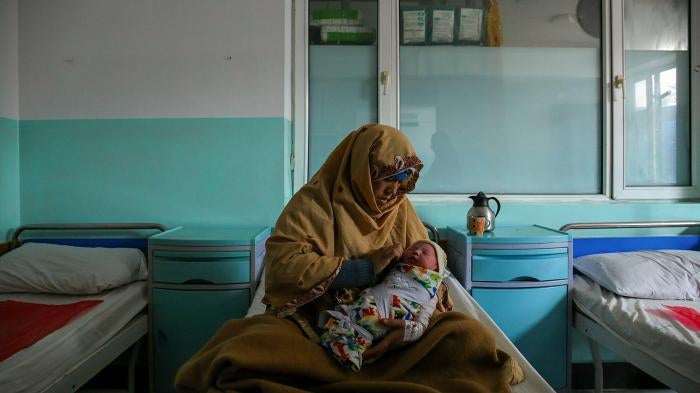Women and Girls Face Barriers to Health Care in Afghanistan
Read a text description of this video
Voiceover
Afghanistan's future looks uncertain as US troops prepare to leave the country before September 11, 2021.
In the years after the US-led military invasion and the defeat of the Taliban government in late 2001, the Afghan government and international donors gave priority to developing an effective health system, including extending access to basic health care to all parts of the country.
This led to significant improvements for women’s health. But even with two decades of effort and hundreds of millions of dollars spent, delivery of health services for women and girls remains far below international standards.
Dr. Najmusama Shefajo, Head of Afghanistan Ob/Gyn Society
Our maternal mortality rate nowadays is 638 per 100,000 live births. It is a shocking number.
Voiceover
In the last several years, donor support to Afghanistan has been falling. Services that were already inadequate are further deteriorating.
Women and girls often struggle to access even the most basic care. Access to contraception. Access to prenatal care. Access to safe birthing services. The cost for transportation, as well as medications and the supplies patients are obliged to pay for because government hospitals no longer have enough funding, keeps women from receiving care, with sometimes deadly consequences.
Insecurity and fighting due to the war in Afghanistan also create major barriers to women and girls accessing health care. Health facilities and workers are often caught in the middle of the conflict or even targeted themselves, making it almost impossible at times to provide services.
In May 2020, attackers killed 24 people including mothers, children, and a midwife in a hospital maternity ward operated by MSF.
Shaharzad Akbar, Afghanistan Independent Human Rights Commission
With the conflict and the uncertainty about the outcome of the peace process, donors are more hesitant about committing funding to NGOs or Afghan governments. In the midst of uncertainty, it’s the most vulnerable, it’s the women, the children, the displaced communities, who are losing out.
Voiceover
Over 75% of the Afghan government’s budget comes from international donors. Afghanistan cannot afford decent health services without help.
Donor countries should fully appreciate how deep and urgent are Afghanistan’s humanitarian needs, including for women’s health care. They should not use the withdrawal of foreign troops as a justification for disengaging when the need for international assistance is greater than ever.
(New York, May 6, 2021) – Falling donor support for essential services in Afghanistan is reducing women’s access to essential health care, Human Rights Watch said in a report released today. More cuts are likely in coming months following the announcement by United States President Joe Biden that the US will withdraw all its forces from Afghanistan by September 11, 2021.
The 39-page report, “‘I Would Like Four Kids—If We Stay Alive’: Women’s Access to Health Care in Afghanistan,” documents barriers to Afghan women and girls obtaining health care and the healthcare system’s deterioration due to declining international support. The drop in international donor funding has already had a harmful – and life-threatening – impact on the lives of many women and girls, as it affects access to and quality of health care.


